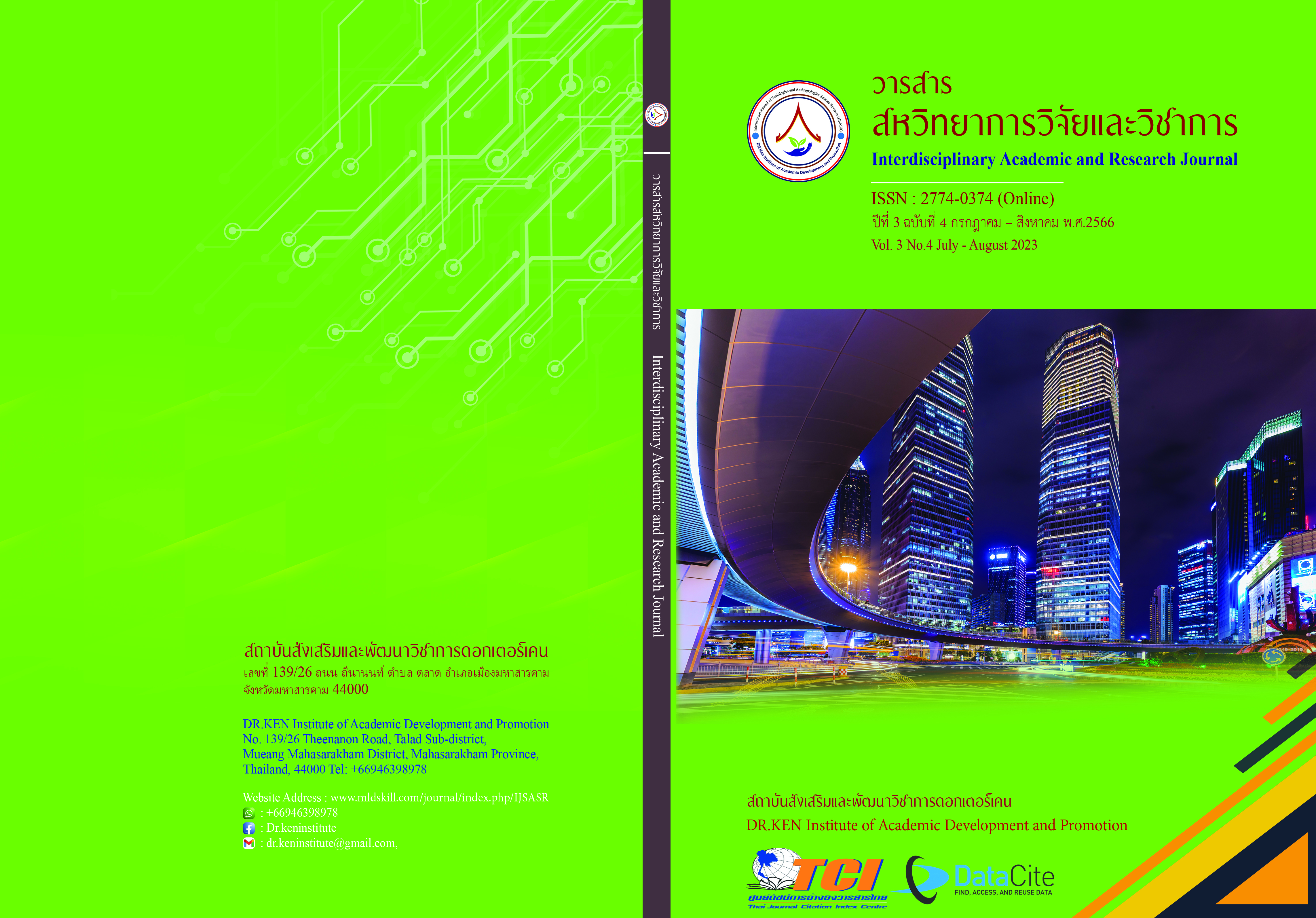A Comparative Study of Metaphors about Women between Thai and Chinese Languages on the Internet
DOI:
https://doi.org/10.14456/iarj.2023.206Keywords:
Metaphor; , Women; , Thai language; , Chinese Language; , Stock Exchange of ThailandAbstract
Humans have two biological sexes: male and female. However, the view of women is partly the result of society and culture in Thai society and Chinese society in the past, which had different views of women than men, which was reflected in the use of language. Thus, this article aims to compare metaphors about women between Thai and Chinese on Internet and the thoughts about women in both Thai and Chinese reflected in these metaphors studied. The data was collected from www.Pantip.com and www.Weibo.com. It was found that both Thai and Chinese have three major types of metaphors. There were animate, inanimate metaphors, and natural metaphors. And both languages have eight subtypes of metaphors are the same, including 1) animate metaphors, namely human-related metaphors, plant-related metaphors, and animal-related metaphors 2) inanimate metaphors, namely food-related metaphors, object-related metaphors, product-related metaphors, machine-related metaphors, and natural metaphors. There are four subtypes of metaphors only in the Thai language or Chinese language, including property-related metaphors, disease-related metaphors, medicine-related metaphors, and building-related metaphors.
References
กฤติกา ชูผล. (2563). อุปลักษณ์ผู้หญิงในบทเพลงสุนทราภรณ์.วารสารวิชาการมนุษยศาสตร์และสังคมศาสตร์ มหาวิทยาลัยราชภัฏธนบุรี, 3 (2), 95-109.
น้ำเพชร จินเลิศ และ สุภาพร พลายเล็ก. (2553). การศึกษาอุปลักษณ์เชิงมโนทัศน์เกี่ยวกับผู้หญิงในวรรณกรรมนิราศ. วารสารศิลปศาสตร์, 10 (1), 157-190.
ปิยภรณ์ อบแพทย์. (2552). อุปลักษณ์เกี่ยวกับชีวิตในหนังสือธรรมะ. วิทยานิพนธ์ปริญญามหาบัณฑิต: จุฬาลงกรณ์มหาวิทยาลัย.
ปิยะแสง จันทรวงศ์ไพศาล. (2556). ศิลปินหญิงกับศิลปะจีนสมัยใหม่และร่วมสมัย.วารสารวิจิตรศิลป์, 4 (1), 203-242.
มิรินด้า บุรรุ่งโรจน์. (2548). อุปลักษณ์เชิงมโนทัศน์เกี่ยวกับผู้หญิงในบทเพลงลูกทุ่งไทย. วิทยานิพนธ์ปริญญามหาบัณฑิต: มหาวิทยาลัยธรรมศาสตร์.
ยมลภัทร ภัทรคุปต์. (2553). อุปลักษณ์ความตายในหนังสือธรรมะ. วิทยานิพนธ์ปริญญามหาบัณฑิต: จุฬาลงกรณ์มหาวิทยาลัย.
ยมลภัทร ภัทรคุปต์. (2560). เอกสารประกอบการสอนรายวิชาคำและสำนวนไทย. สาขาวิชาภาษาไทย มหาวิทยาลัยราชภัฏอุตรดิตถ์.
ราชบัณฑิตยสภา. (2566). พจนานุกรมฉบับราชบัณฑิตยสถานออนไลน์ 2554. Retrieved on 26 May 2023 from https://dictionary.orst.go.th/
Kövecses, Z. (2002). Metaphor: A practical introduction. Oxford university press.
Lakoff, G., & Johnson, M. (1980). Metaphors we live by. University of Chicago Press.
Lakoff, G., & Johnson, M. (2003). Metaphors we live by. University of Chicago Press.
People's Daily. (2020). Pay Tribute! Chinese Women in the New Era. Retrieved on 10 May 2022 from http://opinion.people.com.cn/n1/2020/0308/c1003-31621825.html
Pu Liya. (2020). A Comparative Study of Chinese and English FEMALE Metaphors from the Perspective of Conceptual Metaphor Theory. Masters’s thesis. Guangxi Normal University.
Saeed, J.I. (1997). Semantics. London: Blackwell Publishers Ltd.
Thairath Money. (2023). Sanook dictionary online. Retrieved on 15 May 2023 from https://www.sanook.com/dictionary/dict/dict-th-th-royal-institute/search/
Wang, L. (2016). The Comparative study of conceptual metaphor related to women in Thai and Chinese. Masters’s thesis. Guangxi University for Nationalities.
Xu, Y. (2022). Scholars claim less or no coverage of 'independent women' etc. Retrieved on 22 April 2022 from https://www.sohu.com/a/539504252_115479
Xu, Y. (2023). Online Chinese Dictionary. Retrieved on 15 May 2023 from http://xh.5156edu.com/html5/272633.html
Downloads
Published
How to Cite
Issue
Section
License
Copyright (c) 2023 Yongxing Pan

This work is licensed under a Creative Commons Attribution-NonCommercial-NoDerivatives 4.0 International License.
Copyright on any article in the Interdisciplinary Academic and Research Journal is retained by the author(s) under the under the Creative Commons Attribution-NonCommercial-NoDerivatives 4.0 International License. Permission to use text, content, images, etc. of publication. Any user to read, download, copy, distribute, print, search, or link to the full texts of articles, crawl them for indexing, pass them as data to software, or use them for any other lawful purpose. But do not use it for commercial use or with the intent to benefit any business.
















.png)


